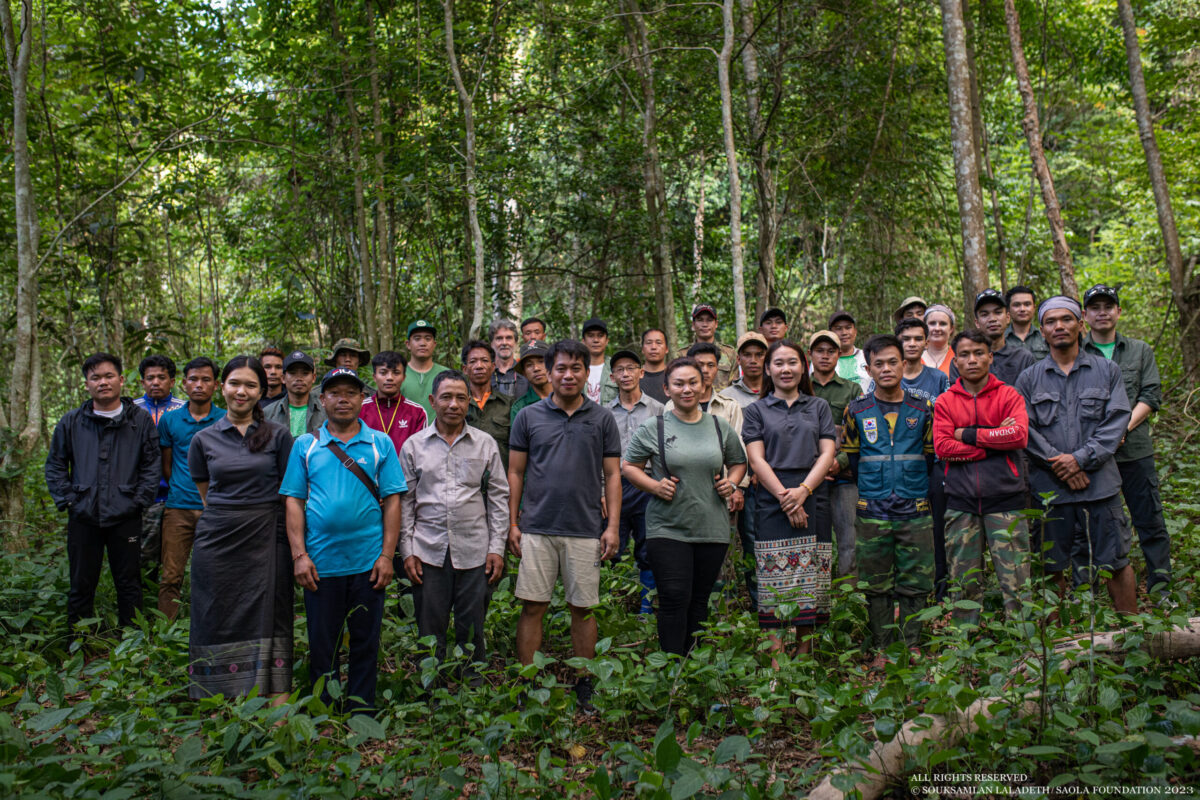Exploring the Mysteries of the Annamite Mountains: A Saola Conservation Event at Watatunga Wildlife Reserve

Saola – perhaps you’re wondering how to say it and what it is? Frankly, so was I.
But last Thursday I found out when we hosted Dr Lorraine Scotson for a saola conservation Event at Watatunga and were transported, via her experience, passion and sheer grit, into the world of this elusive species and the critical conservation efforts underway to protect its habitat.
The saola, now one of the rarest mammals on earth, is an ungulate known colloquially as the “Asian unicorn.” It is the sole species in its genus and so it follows that its extinction would mean that the planet would lose not just a species but a whole genus. Described to science only about thirty years ago, it is one of the most recently discovered large vertebrates on the planet. The first ever wild photo, from a motion-triggered trail camera, was taken in 1998 and the last known photograph was taken in 2013.


So what makes Dr Scotson and her team so hopeful that there are still any out there? Her story is one of adventure, perseverance, daring and hope. These animals are endemic (i.e. found nowhere else on earth!) to the Annamite Mountains, a spectacular and heavily forested craggy limestone mountain range between Vietnam and Laos, of comparable size to the Alps. In 2022, the IUCN released a statement saying that there had not been a good enough search of the area to make a decision on whether there were any left but there have been enough credible anecdotal reports to make Dr Scotson and her team confident that there are still individuals left in the wild. Bleak as the lack of confirmed sightings may appear, the statistics gave Scotson hope, as only about 2% of the range has been searched at an intensity needed to decide whether or not they still exist.
Founded in 2020, the Saola Foundation for Annamite Conservation is laser focussed on changing that percentage by developing the technology needed to save and track Saola. In 2022, Rob Timmins, the Technical Director of the Saola Foundation, and Lee Gutteridge, an international wildlife tracking expert and owner of Nature Guide Training, embarked on a remarkable journey. They ventured to see a Saola carcass that had been discovered in 2010 and is now stored in a government facility in the capital of Lao, Vientiane. In a collaborative effort with members of the Saola Foundation at the Department of Forestry in Vientiane, they made the first casts of Saola footprints now used in tracking today.
Since launching the Saola Foundation, they’ve developed three state of the art methods to track saola and are even now putting them into action with sign detection dogs, human wildlife trackers and in situ instant DNA analysis. Their tracker dogs, Bertie and Norman, trained in Texas on tropical ungulate dung, are now active in Laos. A team of human trackers has been recruited and is supported by a dedicated logistics team, allowing them to cover vast and previously difficult to access areas. They are already sending back camera footage of rare wildlife, a hopeful sign in and of itself, as many of the species they’re sighting are often those targeted by hunters for Traditional Chinese Medicine. If these other rare species are prevalent, the hope is that saola may also be lurking in these little visited enclaves of the mountains. Lastly, the in-situ DNA analysis they have developed means that they can analyse dung samples within an hour, thanks to the Saola DNA Go Biomeme kit, created by the Wildlife Conservation Society Molecular Diagnostics Laboratory at the Bronx Zoo in New York. This innovative kit, built upon several Saola samples collected since 2010, is a portable qPCR machine capable of testing dung samples and providing results within just an hour. It represents a swift and reliable tool readily deployable in the field to aid in Saola conservation efforts, and is clearly of huge benefit when tracking an animal, as alternative methods saw the team waiting up to three months for analysis reports.


The aim of the search is to find the first saola and observe to find out if there is a way for a safe and viable capture for conservation breeding through the IUCN. The first saola will be the teacher as next to nothing is known about this species. There is a time limit to the search – by the end of 2025, should no trace be found of the saola, then the foundation will take the energy and passion and channel it into something else, hence the broad scope of the foundation’s name – for Annamite Conservation. For the time being though, optimism is high and the hunt is on. The months between now and December 2025 are crucial and exciting, filled with hope and hard work, and we wish the team all the luck in the world in their quest for the saola. To follow their fascinating work, sign up to their newsletter here or you can donate via the website here…
Oh and maybe you’re still wondering how to say ‘saola’? It’s a bit like ‘sow’ (the female pig) then ‘la’ – at least, I got away with that when I said it nice and quickly…


You can support the work of the foundation by keeping up to date with all the latest news on their socials, exploring their volunteering opportunities and donating to the cause.